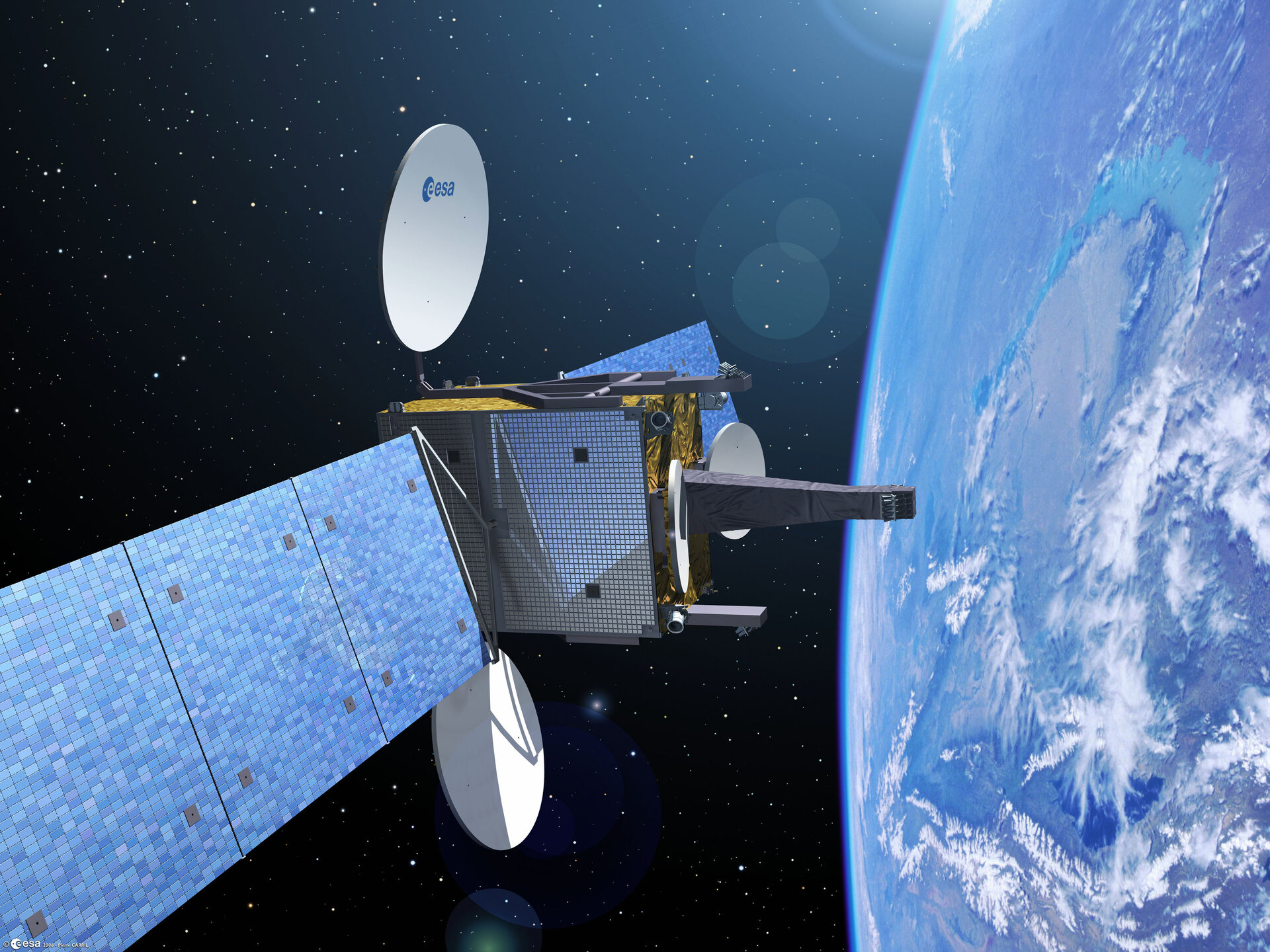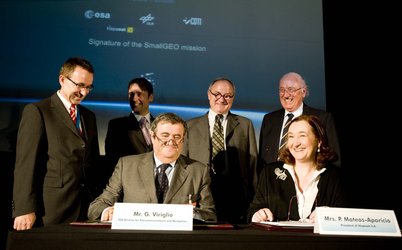Small GEO Programme moves forward with contract-signing
ESA PR 45-2008. Today, ESA has signed the Small GEO Platform and Small GEO Mission contracts with the respective industrial primes, namely: OHB- System AG (Germany) and Hispasat S.A. (Spain).
The contracts were signed in the presence of representatives of the German space agency (DLR), the Spanish Delegation to ESA (CDTI) and members of other Delegations participating in this programme.
The Small GEO Programme aims to develop a general-purpose small geostationary satellite platform and subsequent mission which will enable European industry to develop the technologies to meet the needs of the commercial telecommunications market for small platforms. ESA focuses its support on R&D activities,while the industrial partners finance a substantial part of the development costs and bear the risks associated to the launch and further exploitation.
To achieve this, ESA established an element within its Advanced Research in Telecommunications Systems (ARTES) programme called ARTES 11 which is divided into two parts.
The first part involves the development of a Small Geostationary Platform capable of supporting a payload mass of up to 300kg, payload power of up to 3kW and a lifetime of up to 15 years.
The second part involves the development and launch of a Small Geostationary Satellite and associated mission to provide flight qualification as well as in-orbit demonstration for the platform.
A consortium led by the German company OHB-System AG has been working on the preliminary development of the Small GEO Platform since March 2007. The core team of companies which is jointly developing the Platform and will subsequently commercialise it includes the Swedish Space Corporation (Sweden), Oerlikon (Switzerland) as well as OHB-System AG and its Luxembourg-based subsidiary LuxSpace. The definition phase has been completed, while the detailed design, manufacturing and testing phases have now been authorised by this contract-signing.
As far as the mission is concerned, Hispasat, the leading operator for the Spanish- and Portuguese-speaking markets, has put together the necessary industrial team to implement all the mission elements.
OHB-System AG will act as Satellite Prime. Tesat GmbH (Germany) will be Payload Prime and will be responsible for the integration of the Transparent Repeater (produced by Tesat) and the REDSAT payload.
The resulting satellite, Hispasat (AG1), planned to be launched in 2012, will be placed in geostationary orbit at an altitude of 36000 kilometres, where it will supply Spain, Portugal, the Canary Islands and South America with multimedia services. It will serve as an important and distinctive asset in Hispasat’s satellite fleet, delivering:
A communications capacity of up to 24 transponders in Ku-band and 3 transponders in Ka band,
- A highly innovative REDSAT payload, project-led by Spanish industry.
Development of the REDSAT payload will be led by Thales Alenia Space España, which will coordinate a group of mainly Spanish companies with Thales Alenia Space España being responsible for the Onboard Processor and EADS CASA responsible for the Reflector and DRA Antennas.






